 |
 |
 |
| |
Prognostic significance of a change in liver stiffness measurement by vibration-controlled transient elastography - a multicenter cohort study of 10,920 patients with metabolic dysfunction-associated steatotic liver disease (MASLD)
|
| |
| |
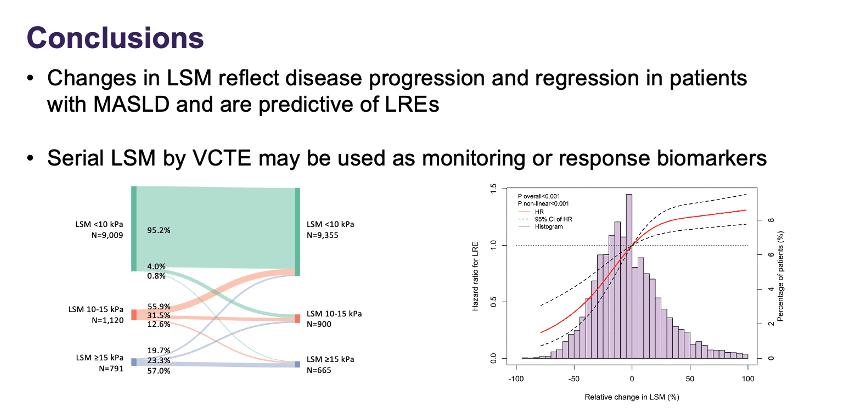
LSM Change Mirrors MASLD Progression and Predicts Liver-Related Events
EASL Congress 2024, June 5-8, 2004, Milan
Mark Mascolini
Changing liver stiffness measurement (LSM) by vibration-controlled transient elastography (VCTE) tracked with disease progression and regression in people with metabolic dysfunction-associated steatotic liver disease (MASLD) in a 10,920-person analysis [1]. LSM changes also predicted liver-related events in this Asian, European, US study published just before EASL 2024 [2].
The VCTE-Prognosis Study Group noted that liver biopsy remains the gold standard for diagnosing MASLD. To stand in as a surrogate endpoint for MASLD in drug trials, these investigators proposed, a noninvasive test would have to do four things: (1) demonstrate diagnostic accuracy in assessing liver fibrosis, (2) predict prognosis, (3) monitor disease progression, and (4) assess response to treatment.
Although LSM by VCTE has proved its value in diagnosing fibrosis and cirrhosis, its prognostic mettle in people with liver disease remains largely unexplored. To address that issue, the VCTE team explored how serial change in LSM relates to emergence of liver-related events-hepatic decompensation (ascites, variceal hemorrhage, hepatic encephalopathy, or hepatorenal syndrome), hepatocellular carcinoma, liver transplant, or liver-related death.
The study group consisted of 17,949 adults with MASLD who had VCTE at 16 centers, prospectively at 14 centers. Most participants, 14,845, lived in Asia, 2943 in Western Europe, and 161 in the United States. Everyone analyzed prospectively had an initial VCTE then at least one additional VCTE 6 to 60 months later (median 15 months). Researchers excluded people with a liver-related event before their first VCTE.
Among 10,920 people with MASLD and 2 or more VCTEs, median age stood at 52 at the first VCTE and 54 at the last VCTE (P < 0.001). Women made up 42% of the group at the first VCTE and 42% at the last. At those two points, growing proportions of participants had diabetes (36% to 49%, P < 0.001) or hypertension (36% to 49%, P < 0.001), while alanine aminotransferase fell significantly (36 to 30 U/L, P < 0.001), as did LSM (6.0 to 5.5 kPa, P < 0.001) and the fat yardstick controlled attenuation parameter (CAP, 302 to 295 dB/m, P < 0.001).
With LSM cutoffs of 10 and 15 kPa, the investigators ranked 82.5% of participants as having low progression risk, 10.3% as intermediate risk, and 7.2% as high risk at their first VCTE. At their last VCTE, 85.9% of participants had a stable LSM, 5.3% had a worse LSM, and 8.8% had improved LSM. After a median 34 months of follow-up from the last VCTE, liver-related events developed in 124 people (1.1% of 10,920), including 55 hepatocellular carcinomas and 81 hepatic decompensations. When the investigators used LSM cutoffs of 8 and 12 kPa, they got similar results.
Relative change in LSM over time correlated with a person's risk of a liver-related event. For example, people with persistently low risk according to LSM had a liver-related event rate of 0.6 per 1000 person-years (p-y) versus 30.1 per 1000 p-y in people with persistently high risk. A drop in LSM over time predicted a bigger fall in liver-related event risk. For example, among participants with a high LSM (at or above 15 kPa) on their first VCTE, those with more than a 30% drop in LSM had 16.1 liver-related events per 1000 p-y at the end of follow-up; those with a stable LSM had 33.3 liver-related events per 1000 p-y; and those with more than a 30% climb in LSM had 55.9 liver-related events per 1000 p-y [2]. Results proved similar with kPa cutoffs of 8 and 12.
The VCTE investigators concluded that LSM changes reflect liver disease progression or regression in people with MASLD and predict liver-related events. They proposed that repeated LSM by VCTE may be a useful biomarker for monitoring progression and response in people with MASLD. In their published summary of these results, the researchers said LSM changes over time are "suitable alternatives to liver biopsy in routine clinical practice and in phase 2b and 3 clinical trials for steatohepatitis" [2].
References
1. Yip TCF, Lee HW, Lin H, et al. Prognostic significance of a change in liver stiffness measurement by vibration-controlled transient elastography-a multicenter cohort study of 10,920 patients with metabolic dysfunction-associated steatotic liver disease (MASLD). EASL Congress 2024, June 5-8, 2004, Milan. Abstract GS-004.
2. Lin H, Lee HW, Yip CF, et al. Vibration-controlled transient elastography scores to predict liver-related events in steatotic liver disease. JAMA. 2024;331:1287-1297. doi:10.1001/jama.2024.1447. https://jamanetwork.com/journals/jama/article-abstract/2816449
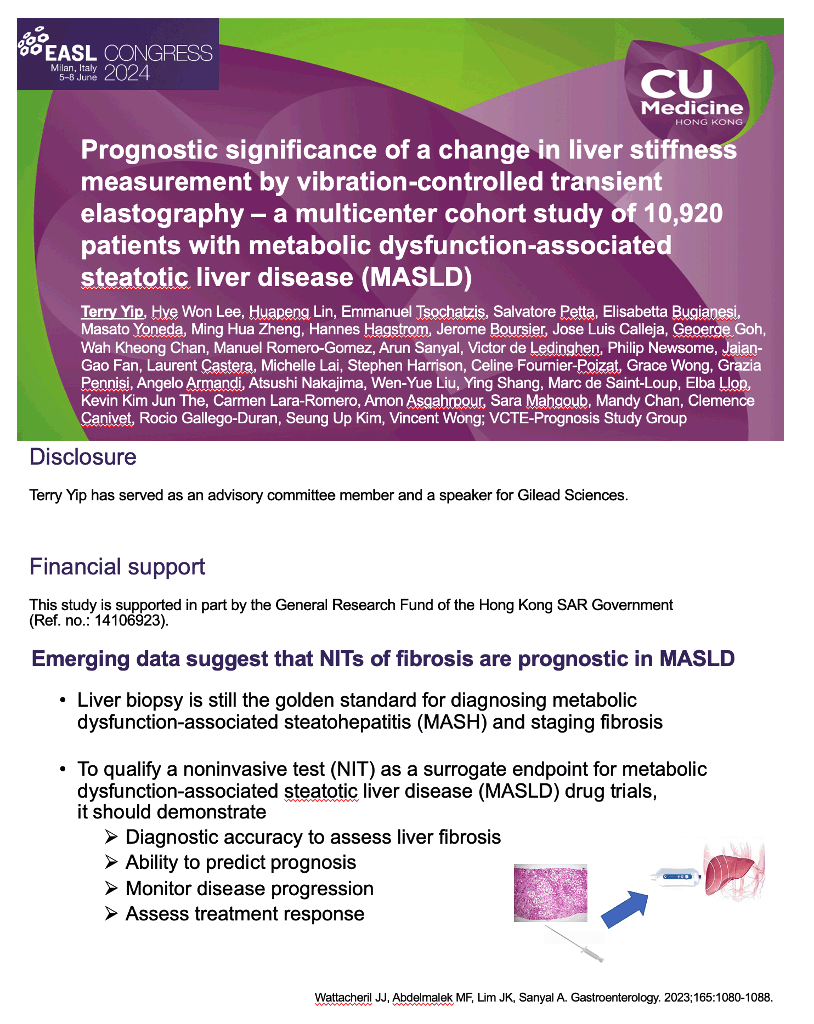
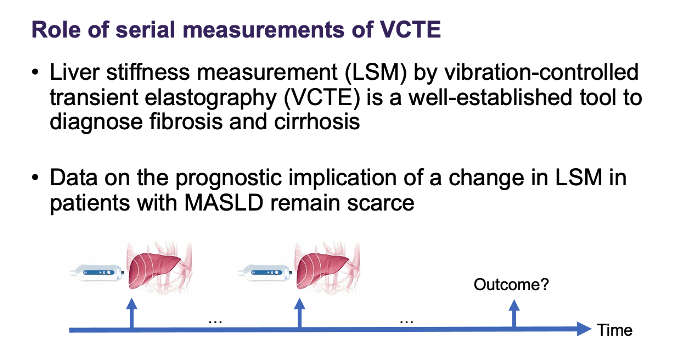
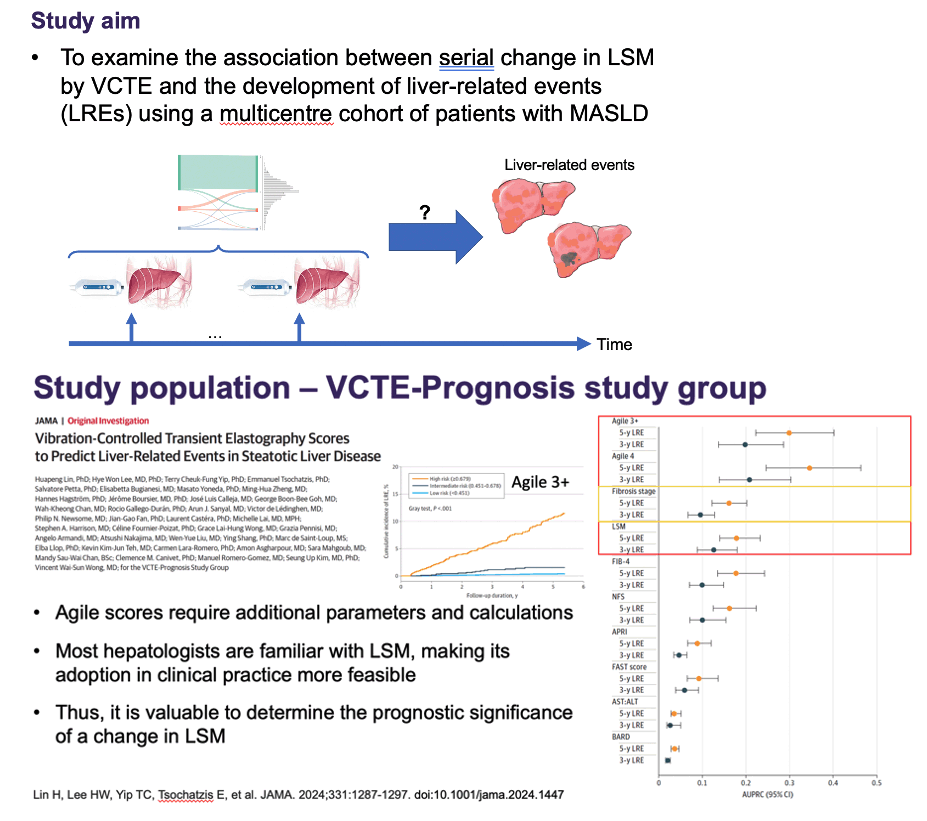
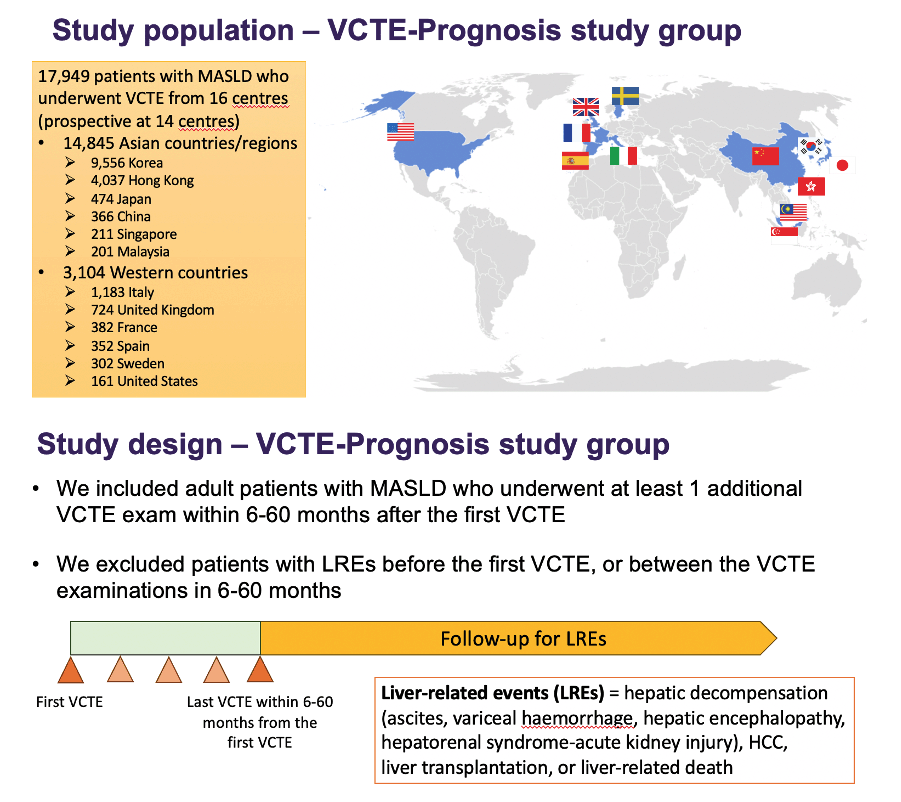

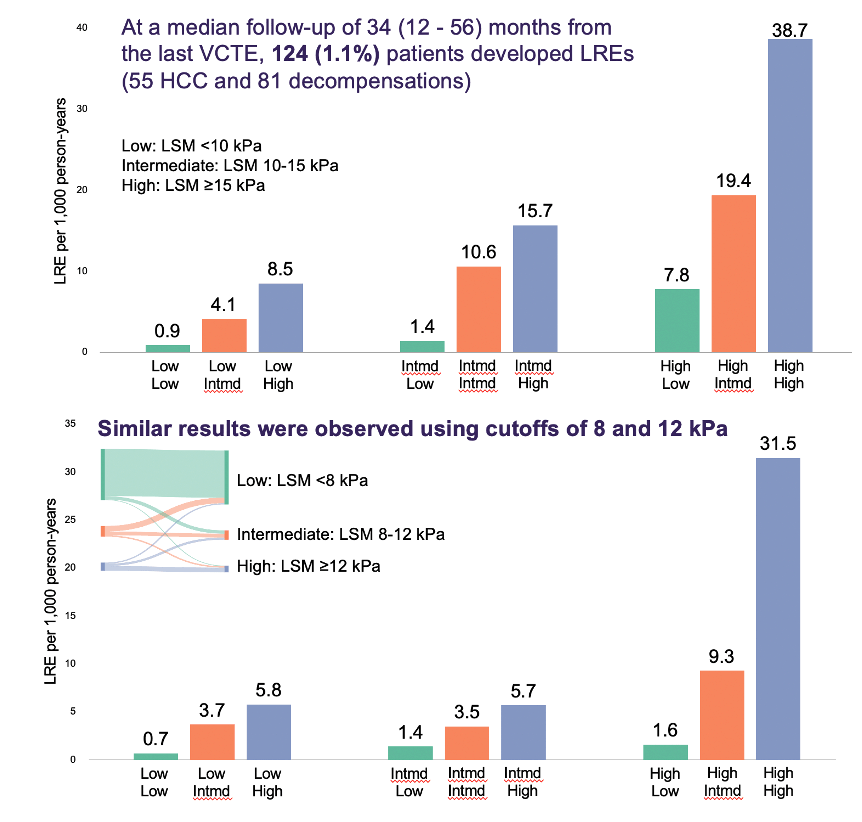
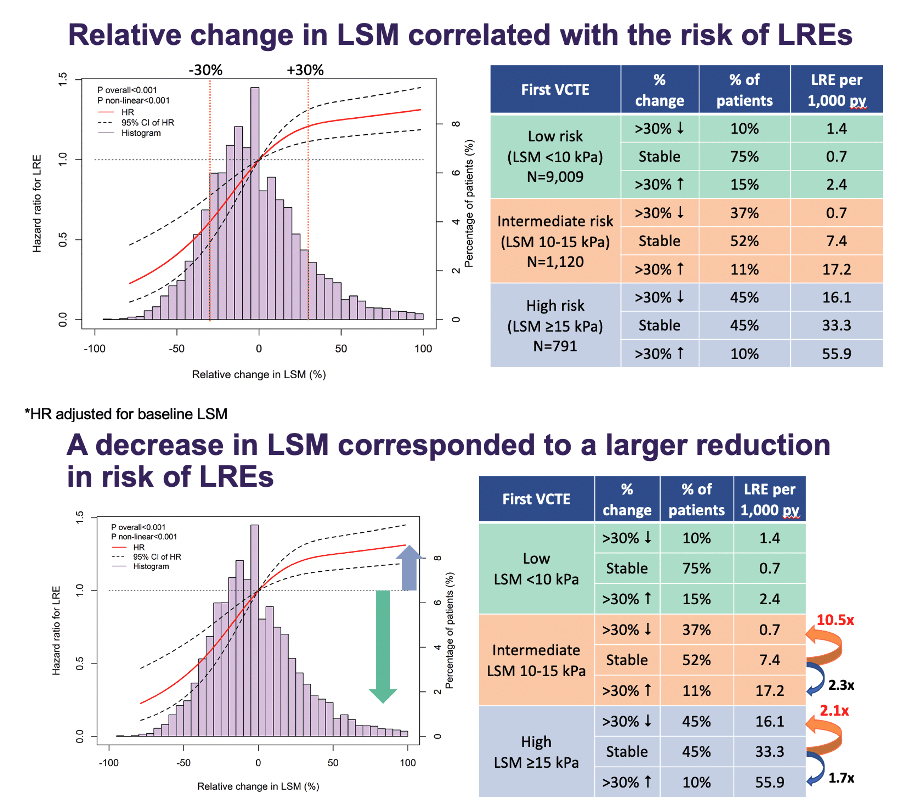
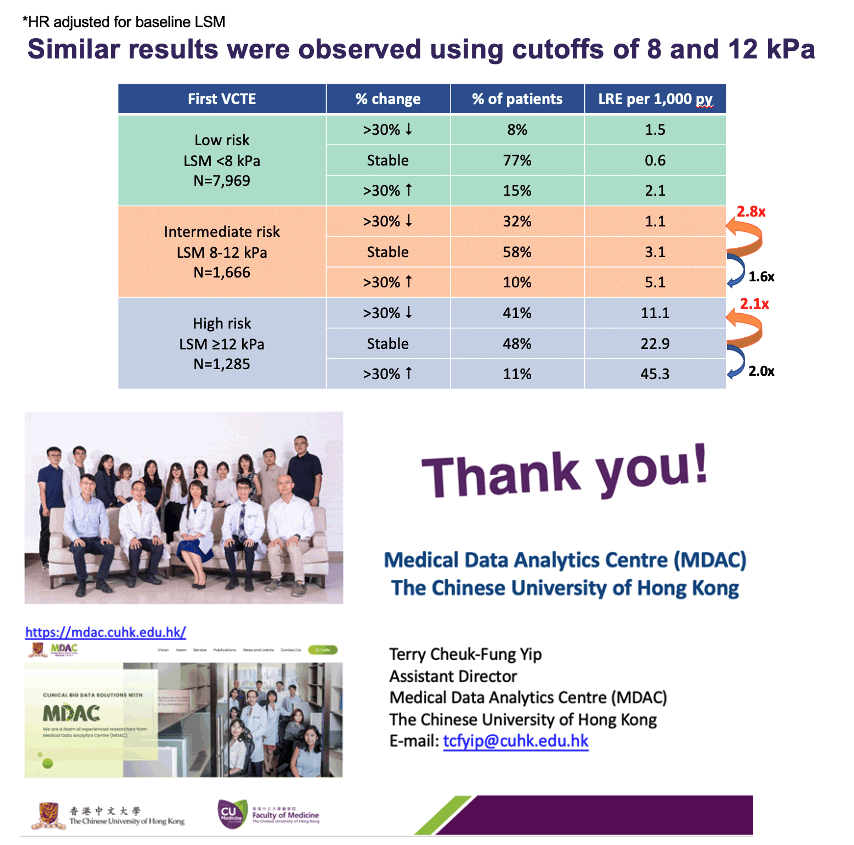
|
| |
|
 |
 |
|
|